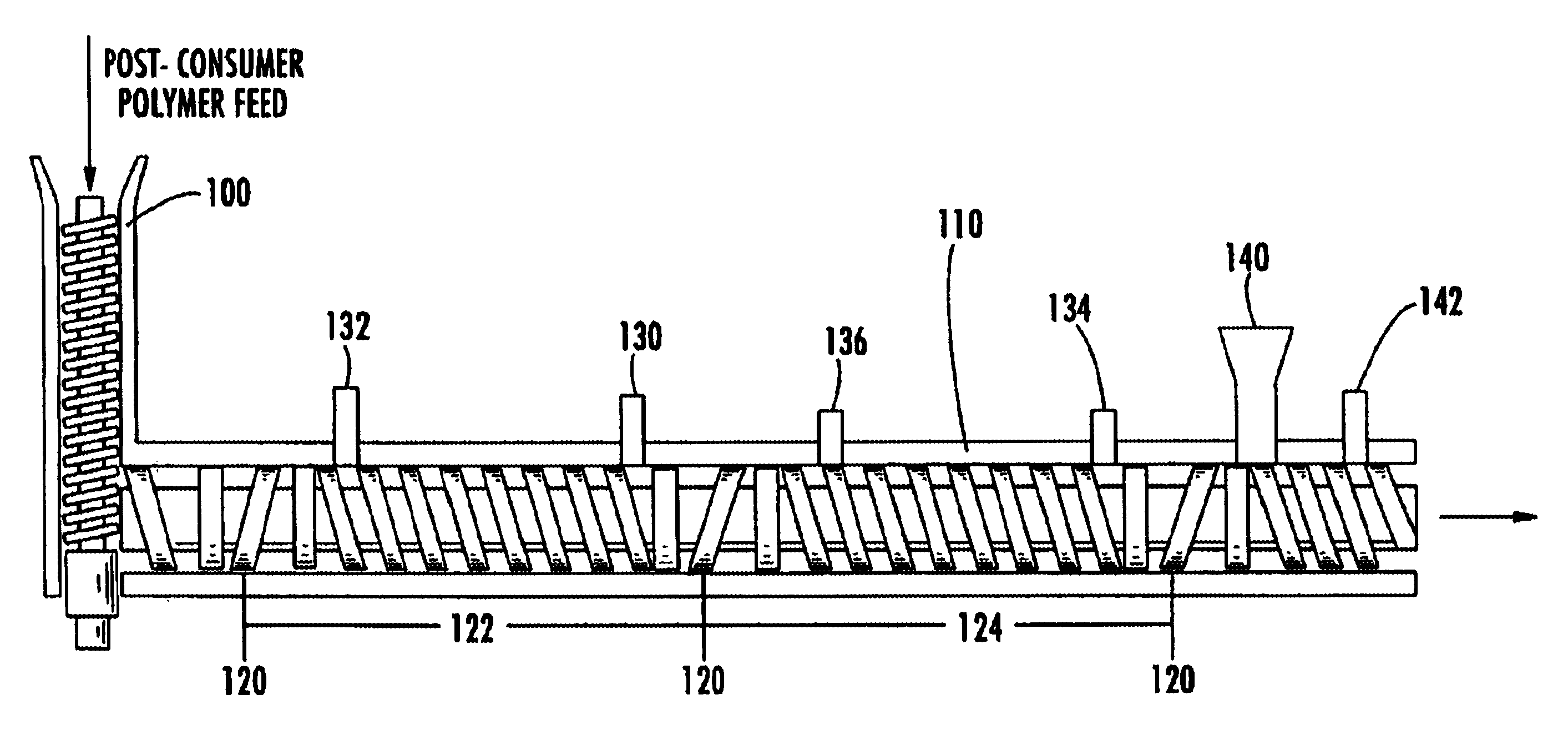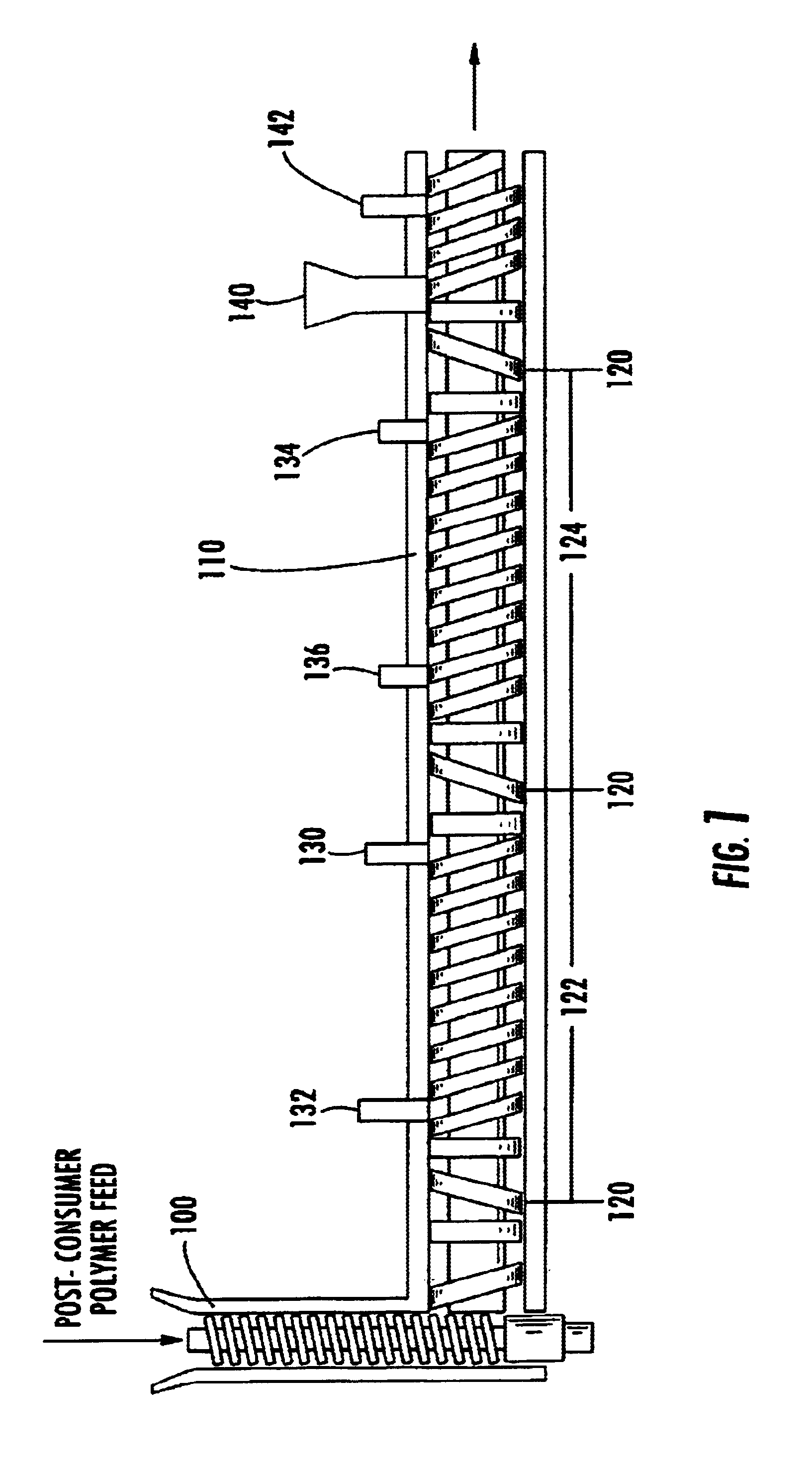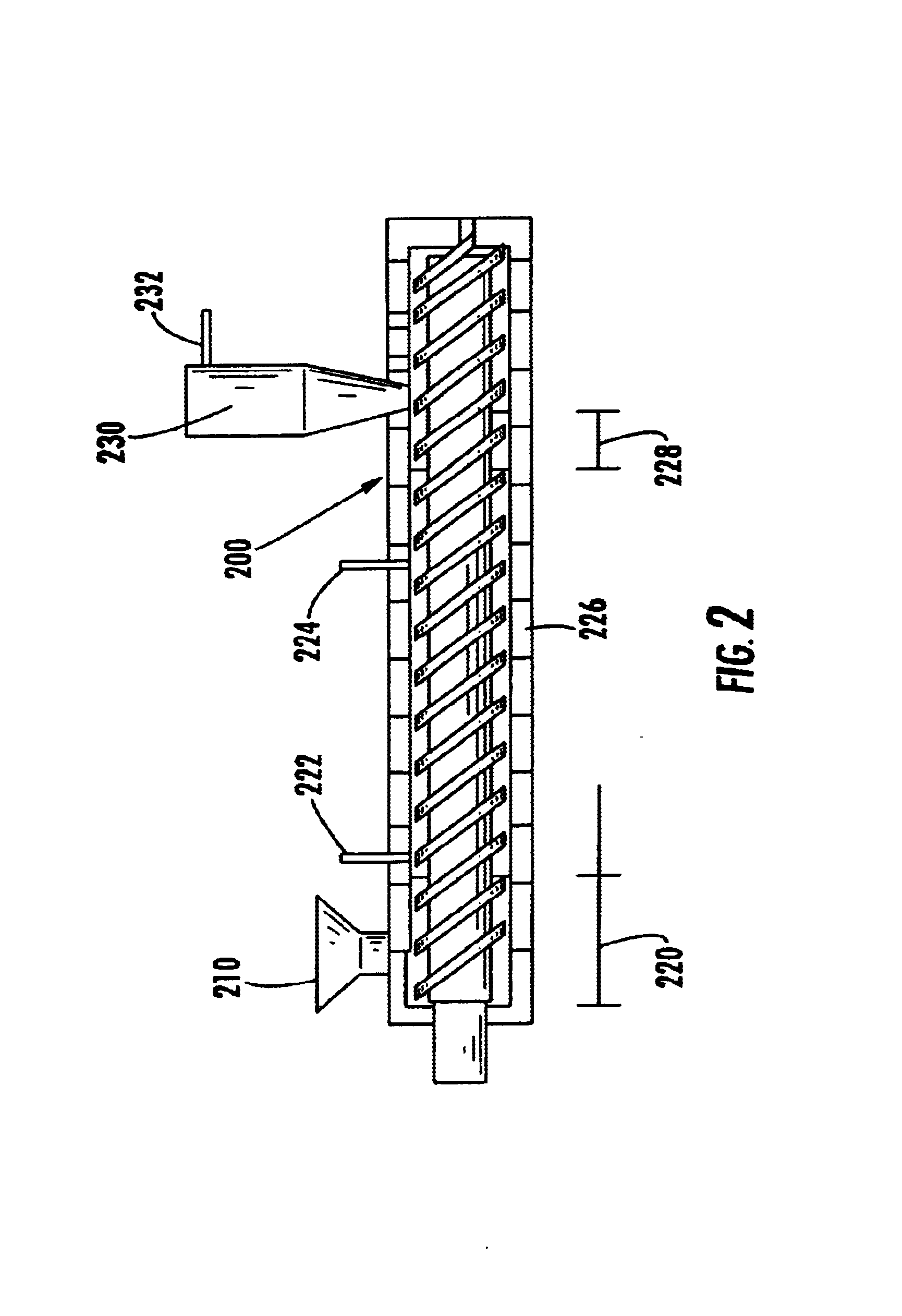CO2-assisted deploymerization, purification and recycling of step-growth polymers
a technology polymerization, applied in the field of step growth polymer processing, can solve the problems of post-consumer pet, unable to meet the requirements of the current collection, and only 24 percent of the total amount of pet available for recycling, etc., and achieve the effect of facilitating penetration
- Summary
- Abstract
- Description
- Claims
- Application Information
AI Technical Summary
Benefits of technology
Problems solved by technology
Method used
Image
Examples
Embodiment Construction
[0008]According to embodiments of the present invention, a method of depolymerizing a polymer includes contacting a polymer with a fluid comprising carbon dioxide and at least one component such that the fluid plasticizes the polymer and facilitates penetration of the component into the polymer to depolymerize the polymer and form oligomeric units, monomeric units, or combinations thereof.
[0009]According to other embodiments of the present invention, a method of depolymerizing a polymer in an extruder includes introducing a solid polymer into the extruder, melting the polymer to provide a molten polymer, contacting the molten polymer with a fluid comprising carbon dioxide and at least one component in a barrel of the extruder, and removing the fluid containing the contaminant from the extruder. The fluid plasticizes the polymer and facilitates penetration of the component into the polymer to depolymerize the polymer and form oligomeric units, monomeric units, or combinations thereof...
PUM
| Property | Measurement | Unit |
|---|---|---|
| Temperature | aaaaa | aaaaa |
| Temperature | aaaaa | aaaaa |
| Temperature | aaaaa | aaaaa |
Abstract
Description
Claims
Application Information
 Login to View More
Login to View More - R&D
- Intellectual Property
- Life Sciences
- Materials
- Tech Scout
- Unparalleled Data Quality
- Higher Quality Content
- 60% Fewer Hallucinations
Browse by: Latest US Patents, China's latest patents, Technical Efficacy Thesaurus, Application Domain, Technology Topic, Popular Technical Reports.
© 2025 PatSnap. All rights reserved.Legal|Privacy policy|Modern Slavery Act Transparency Statement|Sitemap|About US| Contact US: help@patsnap.com



